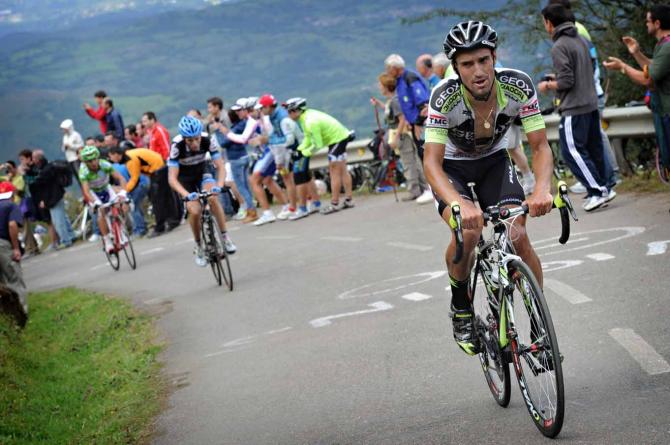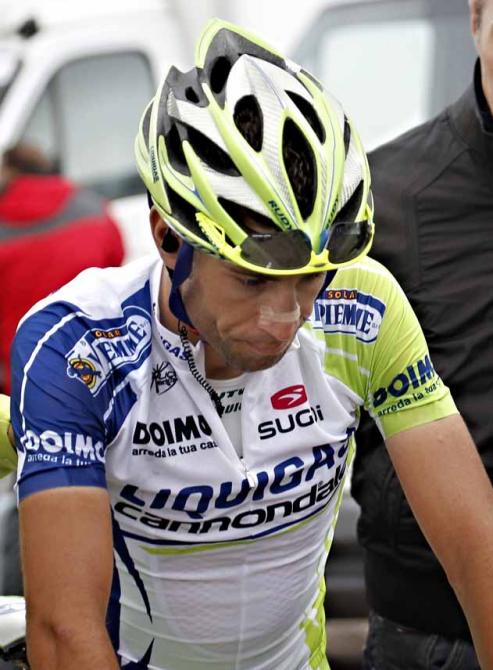Angliru a fitting stage for Vuelta's grand finale
Horner and Nibali face off on Spain's toughest climb


And so it has arrived. The 12.5 kilometre Alto del Angliru in Saturday’s penultimate stage of the Vuelta a España will likely decide the outcome of the entire race - and as Spain’s most difficult climb, a showdown on the Asturian monster ascent is surely the most appropriate of places.
The organisers Unipublic have laid on a short, sharp build-up to the climb, just 142 kilometres long and starting in Aviles. It may not have been intentional but given the three preceding climbs, the Cabruñana, Tenebredo and Cordal are in increasing order of difficulty - third, second and first category - the sense of drama before reaching the Angliru should heighten steadily.
And then in the mining village of La Riosa, the race reaches the Alto del Angliru. Tackled five times since its introduction in 1999, there have been no changes to the steepest, hardest single climb in Spain in the intervening period, bar the resurfacing of the mostly single track road. "It is so hard,” said Alejandro Valverde - second on the climb in 2008 behind Contador, with Purito Rodriguez third - "that all you can do is keep going at your own pace and forget everybody else."
When I first went up it back in the winter of 1998 for Cycle Sport magazine alongside Fernando Escartin as part of a report on the Vuelta’s newly found climb, the silence was uncanny. Today, though, with tens if not hundreds of thousands of fans lining the route (with more than a few pushing the riders, and although this is discouraged, it is hard to stop), the Angliru becomes a long, tunnel-like ascent of pain for the Vuelta’s remaining 150 riders.
The first 5.5 kilometres are not so bad, but when the race reaches the ramps known as the Viapará, the road begins to rear more steeply. From hereon, the average gradient is 10.13 percent.
The first really hard point comes at km 7 on the Cuesta les Cabanes ramp, which reaches 21.5 percent as the road snakes left above the last few meadows of the Riosa valley. There is a brief respite of sorts at km 8.5, where the ramps’ percentage points drop to a mere 14.5 percent and then as the race swings right for another kilometre long straightaway, we’re back up to a more standard, lung-bursting 20 percent.
However, the curve that really leaves a lasting impression is the next big lefthander known as Cobayos, at km 10. Just 2.5 kilometres are left to go, but Cobayos’ 19 percent gradients lead directly onto the 1.3 kilometres long segment called Cueña les Cabres (the goats track, as it is aptly called). By far the hardest part of the climb and with an average of 18 percent and hardest segment of 23.5 percent, this is where the massed lines of fans are thickest, where team car regularly clutches burn out, where top climbers suddenly reach the end of their strength – and where the 2013 Vuelta may well be won or lost.
The latest race content, interviews, features, reviews and expert buying guides, direct to your inbox!
The last part of the climb maintains the pain, with the final hard segment of El Aviru which has slopes of 21 percent with 1.5 kilometres to go very likely to broaden any gains made by a breakaway on the Cabres ‘ramp’. Finally, after a short descent and quick kick back up in the final kilometre to the Picu del Puerto finish, the ascent is over: 1,266 metres of vertical climbing to 1,573 metres above sea level.
Historically decisive
It’s a cliché (and a false one) that the rider wearing yellow at Alpe d’Huez is sure to wear yellow in Paris, but in the case of the Angliru in 2013, with just one stage (and a 450-kilometre transfer south!) left afterwards, it’s very likely to be true. In the previous five ascents, however, only twice [Alberto Contador in 2008 and Juan Jose Cobo in 2011] has the Angliru stage winner also won the Vuelta outright.
The Angliru has seen the race leader change three times though – in 2002, Roberto Heras, the winner, replaced Oscar Sevilla atop the GC, in 2008, Contador ousted Egoi Martinez and in 2011, Cobo supplanted Sky’s Bradley Wiggins. The biggest difference between a stage winner and their closest pursuer dates from 2002, when Gilberto Simoni crossed the line 2:19 ahead of Jan Hruska.
Curiously enough, when the race first tackled the Angliru in 1999, the effect it had on the overall was minimal. The late Jose Maria Jimenez managed to take an impressive stage win in the fog ahead of Pavel Tonkov, but Abraham Olano remained as race leader, even if he would later be forced out by injury.
The climb that precedes the Angliru, the first category Alto del Cordal, could make a major contribution to the outcome of the race - particularly if it rains. The Cordal is not particularly long, but its descent is very dangerous in wet weather. In 1999 Fernando Escartin, one of the top favourites, had a grisly close encounter with a ‘protection’ rail and ended up abandoning, and many more riders fell on the descent, and Olano fell and cracked a rib there, the injury that eventually saw him lose the lead in the Pyrenees.
This year, Vincenzo Nibali has been making some well-publicized prayers for rain given that he believes Chris Horner’s descending is not brilliant and that the American cannot use his ‘out of the saddle’ stance for attacking on the climb either, because the Angliru is too steep to do that in the wet.
This morning in northern Asturias the weather is cloudy and overcast but rain has yet to kick in. Watch this space.
Alasdair Fotheringham has been reporting on cycling since 1991. He has covered every Tour de France since 1992 bar one, as well as numerous other bike races of all shapes and sizes, ranging from the Olympic Games in 2008 to the now sadly defunct Subida a Urkiola hill climb in Spain. As well as working for Cyclingnews, he has also written for The Independent, The Guardian, ProCycling, The Express and Reuters.
